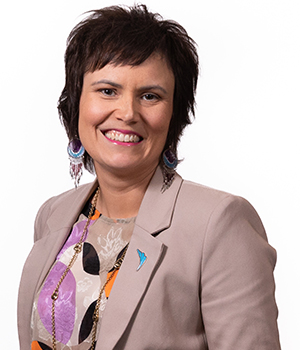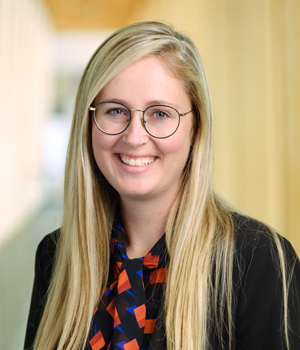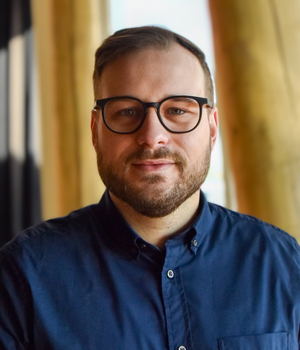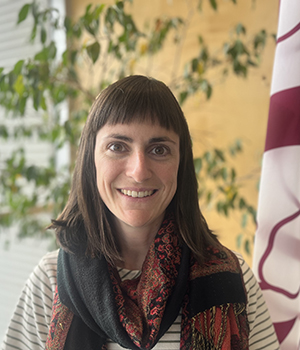Back to program
Best Practices to Foster and Maintain Sustainable Relationships with First Nations in the Mining Sector
Thursday, November 23, 2023
Room 401 - Hydro-Québec
Session organizer
Micheline Caron
Quebec Mining Association
Session organizer
Martin Duclos
Sayona
This conference session will highlight the importance of creating lasting partnerships based on attentiveness and dialogue between mining companies and host communities. Examples of successful collaborations between two mining companies and their First Nations partners, from integration and collaboration on various projects to the negotiation of agreements, will be presented. Tools and approaches to enhance the cultural relevance of mining-related study and integration programs will also be presented.
This session will be offered in French and in English.
9:00 a.m.
Respect and Trust: Raw Materials for Sustainable Partnerships
Conference details
Responsible mining of the rich lithium deposits in the Abitibi-Témiscamingue and Eeyou Istchee James Bay regions begins with an operation that requires no technology, no scientific intervention and no exploration or prospecting of the territory.
The first and most important step is social acceptability.
Imposing one's presence in a region without first earning the support of the host communities is a thing of the past.
A trusting relationship is built one meeting at a time, through dialogue, transparency and respect for communities, especially First Nations, for whom the land represents an inalienable identity and heritage value.
That's what motivates Sayona's commitment to co-creating its projects with First Nations. The result? Contributing to and maximizing the opportunity for positive spin-offs in the communities.
Establishing and maintaining a relationship of trust and mutual respect with communities is a fundamental value.
Respecting indigenous territory means recognizing its cultural, environmental and economic value. To build a lasting partnership with aboriginal peoples, it must be based on solid pillars such as truthfulness, sincerity, honest consultation, listening, real commitment to ecosystem preservation, and community benefit.
Respecting indigenous territory means recognizing its cultural, environmental and economic value. To build a lasting partnership with aboriginal peoples, it must be based on solid pillars such as truthfulness, sincerity, honest consultation, listening, real commitment to ecosystem preservation, and community benefit.
Then we have to match our words with deeds. The burden of proof is on us. Acting in accordance with one's promises illustrates good faith.
Respecting First Nations also means recognizing the importance of each people's distinct traditions, lifestyles and customs. Adapting to their rhythm is another fundamental pillar.
This approach promotes sustainability and inclusive economic growth. Better still, it is the raw material for building a relationship of trust.
In this sense, Sayona's actions in terms of environment, society and governance (ESG) reflect its commitment to social responsibility, and translate into a desire to minimize the environmental impact of its activities and offer tangible benefits to host communities.
We're not a discreet neighbor. But we can minimize the impact of our presence by carefully applying a few essential rules. Although the balance can be delicate, it does encourage us to do our homework and review our approach regularly.
Since the sustainability of a relationship depends on frank and sincere collaboration, this is the spearhead of our constantly evolving approach.
9:30 a.m.
Jobs in the mining sector and culturally-relevant training programs for Indigenous people
Conference details
Automation of operations is increasingly being advocated within the mining industry and questions are being asked about the types of training programs that will be necessary to ensure the place of Indigenous people in this sector in the long term. As part of a project of the Pôle régional en enseignement supérieur dans le secteur minier en Abitibi-Témiscamingue, a research team from UQAT’s School of Indigenous Studies developed a tool to assess the cultural relevance of post-secondary training programs related to the mining sector. Based on a review of literature, focus groups, and interviews conducted with mining, higher education, Indigenous, and government organizations from the three main mining regions of Québec, the tool offers around a hundred analysis and decision-making indicators that promote cultural safety within post-secondary institutions.
10:30 a.m.
Restoration of Abandoned Mining Exploration Sites in Nunavik
Conference details
Authors: Aglaé Boucher-Telmoss (Administration régionale Kativik) et Nancy Dea (FRAN)
From the 1950s onwards, mining companies became increasingly interested in the Nunavik region. At the time, there was very little regulatory framework to guide company activities in terms of environmental and social impacts. Since the signing of the James Bay and Northern Quebec Agreement in 1975, mining companies have been subject to stricter rules, forcing them to declare their activities to the Ministère des Ressources naturelles et de la Faune (MRNF) and to restore abandoned mining exploration sites. Unfortunately, the activities carried out by mining companies in the past have had an impact on vegetation, wildlife habitats and water quality, as well as a visual impact on the region's landscape.
The present clean-up project stems from community initiatives in the 1990s, followed by a joint project undertaken in 1999 by the Kativik Regional Government (KRG), the Makivvik Corporation and Université Laval's Groupe d'études inuit et circumpolaires (GÉTIC) to count and locate abandoned mining exploration sites in Nunavik. In 2000, the Naskapi Nation of Kawawachikamach joined the project.
Since 2007, the funding agreement has been supplemented several times to extend the rehabilitation activities carried out on all 90 sites indicated in the initial inventory, as well as on several other sites identified over the years. Clean-up work was completed in 2022, with over 130 sites successfully completed as part of the project.
At the heart of this initiative, the involvement of Nunavik communities and the ongoing collaboration between the Kativik Regional Government, the Makivvik Corporation, the Fond Restor-Action (FRAN) and the Gouvernement du Québec, through the Ministère des Ressources naturelles et des forêts, have made it possible to overcome many challenges and bring about major changes in mining practices in Nunavik.
11:00 a.m.
Quebec Iron Ore and the Innu Communities: A Mutually Beneficial and Growing Partnership
Conference details
Since the relaunch of the Bloom Lake Mine in 2018, Quebec Iron Ore (QIO) has set itself apart through its unique approach to developing partnerships with First Nations. This has greatly contributed to the company's success, and to making it the largest employer of First Nations communities on the Côte-Nord.
QIO is privileged to operate on Nitassinan, the ancestral territory of its Innu partners in Uashat mak Mani-utenam and Matimekush-Lac John. In this context, the company is committed to limiting the impact of its activities on the territory, while maximizing the spin-offs and opportunities associated with its development projects for its host communities.
To achieve these objectives, QIO and its Innu partners work daily to maintain and nurture a relationship based on trust and respect. This approach is based on three main priorities:
- Support the economic growth of the Uashat mak Mani-utenam community through various local initiatives;
- Continue to increase the integration of native workers within the company;
- Promote Innu culture, language and values throughout the company.






